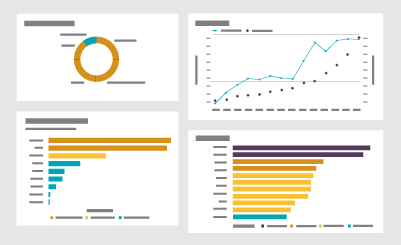One of Array’s core focuses is problem solving. Ingrained in our working style, we continually work toward creating clever solutions to improve client and internal outcomes. Array, a proponent of first mover advantage, strives to benefit from the concept. In its recent improvement efforts, Array has adopted analytics in its daily processes to become a truly data-driven organization.

Many organizations have come to fear the analytics wave – thinking it requires massive investments, highly-skilled workers and a long wait before realizing the true potential. While most of this is partly true, implementing analytics and moving from legacy management processes is easier than one would think. It is a continuous improvement process where each iteration aims at providing answers to the same basic question using more efficient tools and practices. Most mid-size organizations unknowingly have amassed a wealth of knowledge in the form of records maintained over years, so they already have the required data for such an initiative. If only there were a way to learn from this data.
One of the first arguments for analytics implementation is the business intelligence (BI). The legacy systems are often synonymous with the tiring circle that rotates until the end of time and takes forever to load information. Adopting BI tools enables organizations to speed the turnaround time for reviewing historic information.

Say an organization wants to analyze reports from May, 2013. Using legacy systems, the accounting department had to query for older reports then save them to the local network. They then had to run the same report for current data and save that to the local network. Then finally, they were able to spend hours trying to compare them side-by-side. With BI tools, not only is the process to view data significantly quicker, but organizations can also create custom reports on the fly. They can ask questions and dive deeper into records to not only see a discrepancy, but also pinpoint the reason for it all at lightning fast speed.
Another benefit of moving to BI is the undeniable, unified truth available to all users through the data. Practice leaders can see all the projects without relying on a plethora of reports. They have the ability to view the information at varying levels, compare it to other manager data and develop performance benchmarks. This leaves them with more time to focus on core project activities, but with BI insights.
 Once we’ve harnessed the power of data, we want to use it to improve the quality of our projects. Single out the reason for error and focus our improvement efforts toward the root cause rather than using a one-size fits all approach for improving performance. For example, during the quality review process we saw that the scores for the initial design phase were consistently low. On a deeper dive, we found that the scores were low for only the new users, which drastically reduced the average. This led us to a training process review of the tools we used.
Once we’ve harnessed the power of data, we want to use it to improve the quality of our projects. Single out the reason for error and focus our improvement efforts toward the root cause rather than using a one-size fits all approach for improving performance. For example, during the quality review process we saw that the scores for the initial design phase were consistently low. On a deeper dive, we found that the scores were low for only the new users, which drastically reduced the average. This led us to a training process review of the tools we used.
Analytics implementations can be tricky in the sense that if not guided skillfully, they have the potential to drain company resources fast with no visible results. I recently came across an article that said, “if your company is not good at analytics, it’s not ready for AI,” to which I add this preamble – if your company does not have a stable BI solution, it is not ready for Analytics either.

